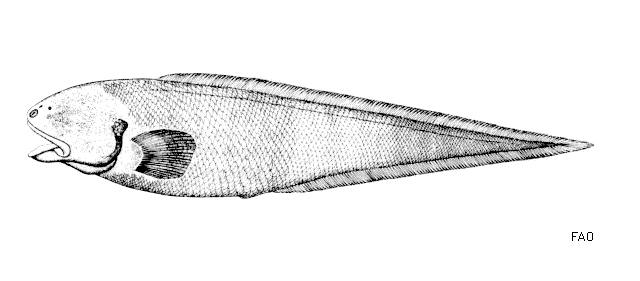| Ophidiidae (Cusk-eels), subfamily: Neobythitinae |
| 75.2 cm SL (male/unsexed) |
|
benthopelagic; marine; depth range - 5082 m |
| Western Central Atlantic: off the Bahamas. |
|
Dorsal spines (total): 0-0; Dorsal soft rays (total): 116-116; Anal spines: 0-0; Anal soft rays: 98-98; Vertebrae: 50-50. Soft, watery body; eyes small; anterior nostril swollen; no spines on opercle and preopercle; preopercle posteriorly expanded; 10-12 developed rakers on anterior gill arch (Ref. 34024). Anal fin rays 111 in Ref. 40708. Distance of pelvic fin base to anal fin base is 27% SL (Ref. 40708). |
| Rare species (Ref. 34024). Apparently a slow swimmer because of its poorly developed musculature. Its large mouth opening and oral cavity may enable it to feed on a great size range of preys. The enlarged and swollen anterior nostril may reflect increased reliance on olfaction in recognition of conspecifics or food sources (Ref. 40708). Reproductive strategy possibly similar to other members of this family being oviparous, with oval pelagic eggs floating in a gelatinous mass (Ref. 205). |
|
Least Concern (LC); Date assessed: 11 October 2018 Ref. (130435)
|
| harmless |
Source and more info: www.fishbase.org. For personal, classroom, and other internal use only. Not for publication.

